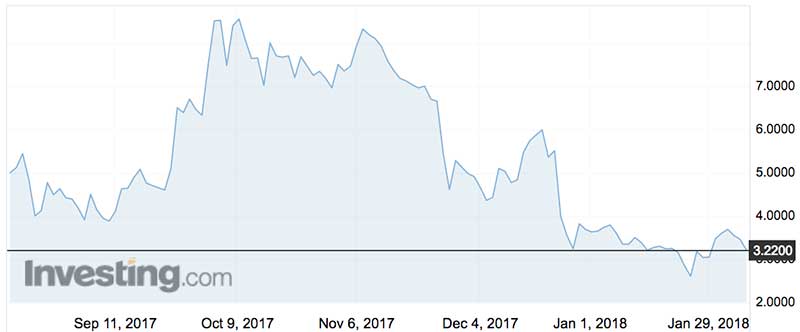We should know by March if the Pilbara gold nugget rush has legs
Mining
Mining
Around March Canada’s Novo Resources should give us information on whether the great Pilbara gold nuggets rush of 2017 has legs, writes Barry FitzGerald
Last year’s Pilbara gold nugget rush has failed to reignite after the lead player, Canada’s Novo Resources, disappointed punters in the latest update on its search for the Pilbara’s version of South Africa’s fabled Witwatersrand golden treasure trove.
In an update to its home market in Vancouver, Novo (TSX.V:NVO) merely announced that it had secured access to a test processing plant in a Perth lab capable of processing 5 tonne bulk samples from its Karratha gold project, a joint venture with the ASX-listed Artemis Resources (ASX:ARV).
The move was expected given earlier attempts to define the grade and tonnage of the conglomerate material containing the heavily promoted watermelon seed-shaped nuggets by diamond drilling and wide-diameter drilling failed to prove effective.
Novo did not earn any friends among the Pilbara nugget devotees by stating the obvious in the update – the high “nugget effect’’ at the project near Karratha, WA “means that a relatively large sample size is required to ensure the resultant assay grade is better representative of the surrounding material”.

All so-called “nuggetty’’ gold deposits are the same.
Apart from the a suck-and-see approach used by old-timers, the only real test of a nuggetty project’s commercial potential is to subject it to an extensive bulk-testing program, a sort of mini-mining.
Novo set the Pilbara alight last July when it announced the discovery of watermelon seed-like gold nuggets from a bulk sample (funnily enough) taken from a trench at the Purdy’s Reward prospect, 35km south-east of Karratha.
It said at the same time that the prospect was just part of an 8km trend “identified as highly prospective for conglomerate-hosted gold mineralisation considered analogous to the Witwatersrand”.
The combination of watermelon seed-like nuggets and the mention of the Witwatersrand proved electrifying for Novo’s share price.
There was a rub-off affect on Artemis and a bunch of other ASX-listed juniors which — more by default than anything — happened to have tenements in the Pilbara known to contain prospective conglomerates sandwiched between the region’s extensive 3 billion and 2.78 billion year-old rock packages.

The Pilbara rush became hotter again when assay results followed in August.
Two splits of the bulk sample (470kg) returned a weighted average grade of 67.08g/tonne gold or more than two ozs a tonne.
Novo, which had been a C66c stock before all the fun started, zoomed off to as much as $C8.83 a share come early October, taking Artemis along for the ride.
But it has been downhill since.
Novo fell 7 per cent on Tuesday night in Vancouver to $C3.22, taking the market value loss for the company to as much as $C800 million ($812 million) since its peak last year.
Artermis and the other ASX juniors which quickly became Pilbara gold nugget stocks last year have also been beaten up badly in response to a lack of progress in defining whether or not the Pilbara’s conglomerate nuggets are a commercial proposition or not.
Novo’s update puts a positive spin on the 2018 bulk sampling program.
Chief executive and director Rob Humphryson – a graduate of the Kalgoorlie School of Mines – said securing the test processing plant for the program was a “game changer for our exploration efforts at Karratha”.
“Having a fit-for-purpose, certified test plant suited to ascertaining the head grade of larger-sized samples whilst also providing gold deportment information is key to gaining a better understanding of the Karratha gold project,” he said.
It is expected that up to three (5 tonne) samples per week will be processed, with an expected four-week turnaround time to receive grade results.
So sometime around March there should be some meaningful information on whether the great Pilbara gold nuggets rush of 2017 has legs – or if it doesn’t.
Mind you, 15 tonnes a week is not exactly putting things to the test.
Could it be then that the conspiracy theorists are on the money by suggesting a go-slow by Novo would serve its longer-term interests if it first wants to secure absolute dominance of the nugget play?
Seems far-fetched that one.